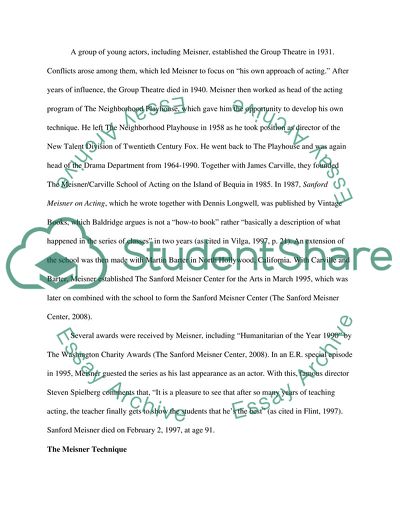Cite this document
(Sanford Meisner and the Meisner Technique Essay, n.d.)
Sanford Meisner and the Meisner Technique Essay. https://studentshare.org/performing-arts/1742836-sandy-meisner-born-ny-1905-1997-ca-american-actor-and-acting-teacher-who-developed-an-acting-methodology-known-as-meisner-technique
Sanford Meisner and the Meisner Technique Essay. https://studentshare.org/performing-arts/1742836-sandy-meisner-born-ny-1905-1997-ca-american-actor-and-acting-teacher-who-developed-an-acting-methodology-known-as-meisner-technique
(Sanford Meisner and the Meisner Technique Essay)
Sanford Meisner and the Meisner Technique Essay. https://studentshare.org/performing-arts/1742836-sandy-meisner-born-ny-1905-1997-ca-american-actor-and-acting-teacher-who-developed-an-acting-methodology-known-as-meisner-technique.
Sanford Meisner and the Meisner Technique Essay. https://studentshare.org/performing-arts/1742836-sandy-meisner-born-ny-1905-1997-ca-american-actor-and-acting-teacher-who-developed-an-acting-methodology-known-as-meisner-technique.
“Sanford Meisner and the Meisner Technique Essay”. https://studentshare.org/performing-arts/1742836-sandy-meisner-born-ny-1905-1997-ca-american-actor-and-acting-teacher-who-developed-an-acting-methodology-known-as-meisner-technique.


